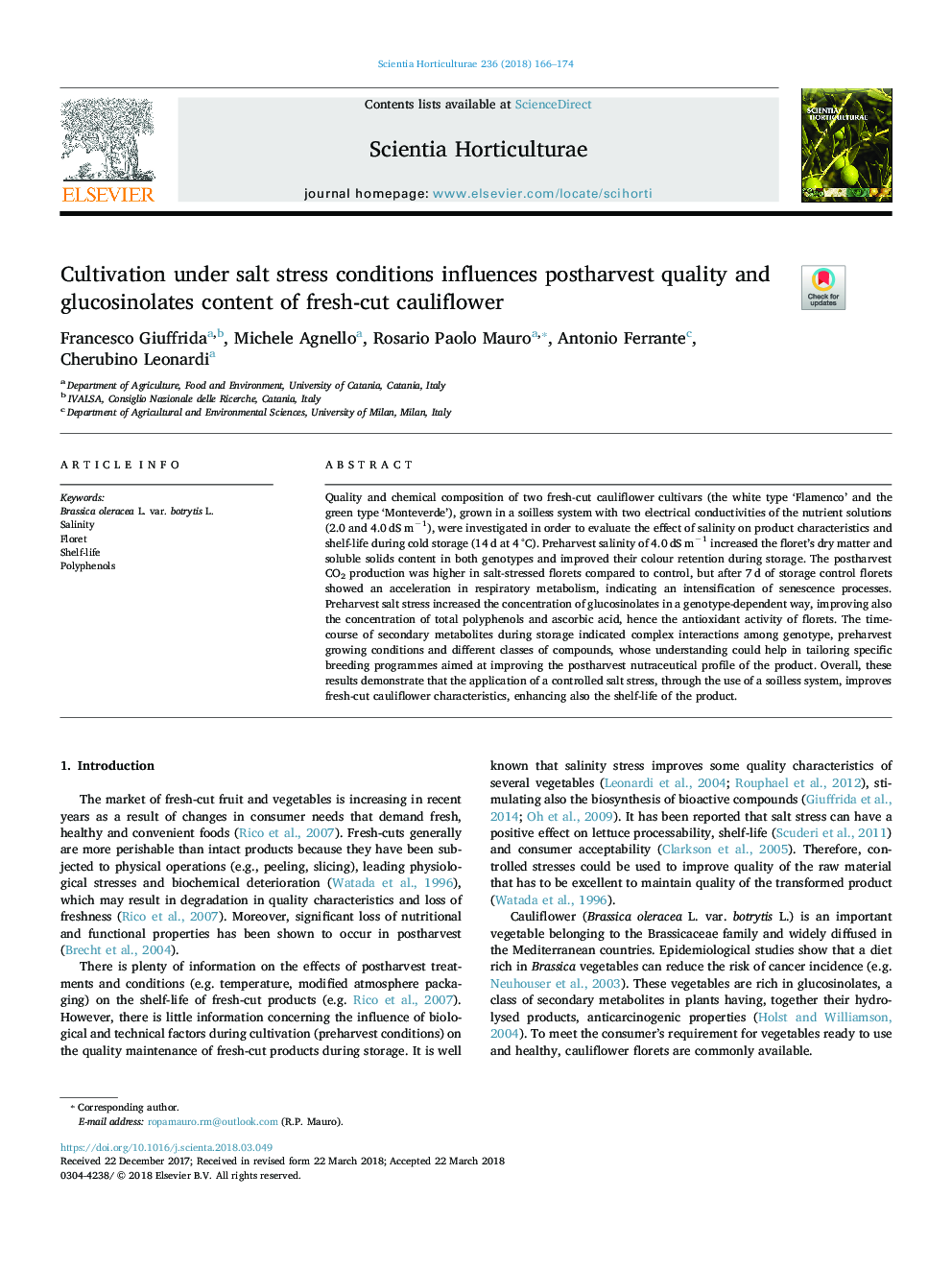| Article ID | Journal | Published Year | Pages | File Type |
|---|---|---|---|---|
| 8892624 | Scientia Horticulturae | 2018 | 9 Pages |
Abstract
Quality and chemical composition of two fresh-cut cauliflower cultivars (the white type 'Flamenco' and the green type 'Monteverde'), grown in a soilless system with two electrical conductivities of the nutrient solutions (2.0 and 4.0â¯dSâ¯mâ1), were investigated in order to evaluate the effect of salinity on product characteristics and shelf-life during cold storage (14â¯d at 4â¯Â°C). Preharvest salinity of 4.0â¯dSâ¯mâ1 increased the floret's dry matter and soluble solids content in both genotypes and improved their colour retention during storage. The postharvest CO2 production was higher in salt-stressed florets compared to control, but after 7â¯d of storage control florets showed an acceleration in respiratory metabolism, indicating an intensification of senescence processes. Preharvest salt stress increased the concentration of glucosinolates in a genotype-dependent way, improving also the concentration of total polyphenols and ascorbic acid, hence the antioxidant activity of florets. The time-course of secondary metabolites during storage indicated complex interactions among genotype, preharvest growing conditions and different classes of compounds, whose understanding could help in tailoring specific breeding programmes aimed at improving the postharvest nutraceutical profile of the product. Overall, these results demonstrate that the application of a controlled salt stress, through the use of a soilless system, improves fresh-cut cauliflower characteristics, enhancing also the shelf-life of the product.
Keywords
Related Topics
Life Sciences
Agricultural and Biological Sciences
Horticulture
Authors
Francesco Giuffrida, Michele Agnello, Rosario Paolo Mauro, Antonio Ferrante, Cherubino Leonardi,
